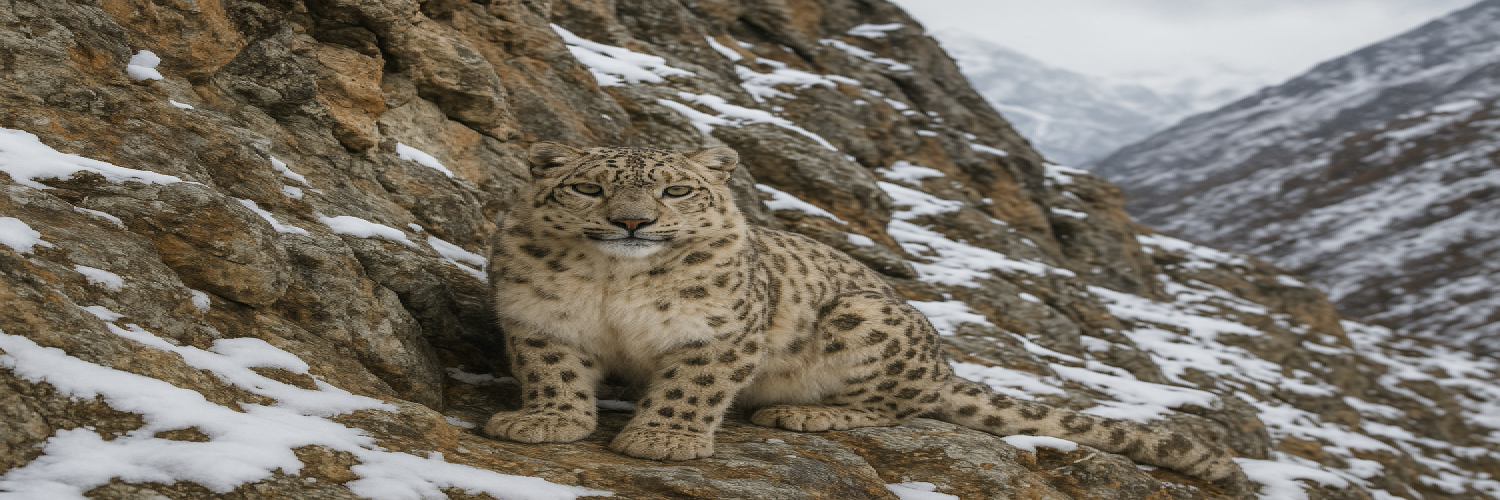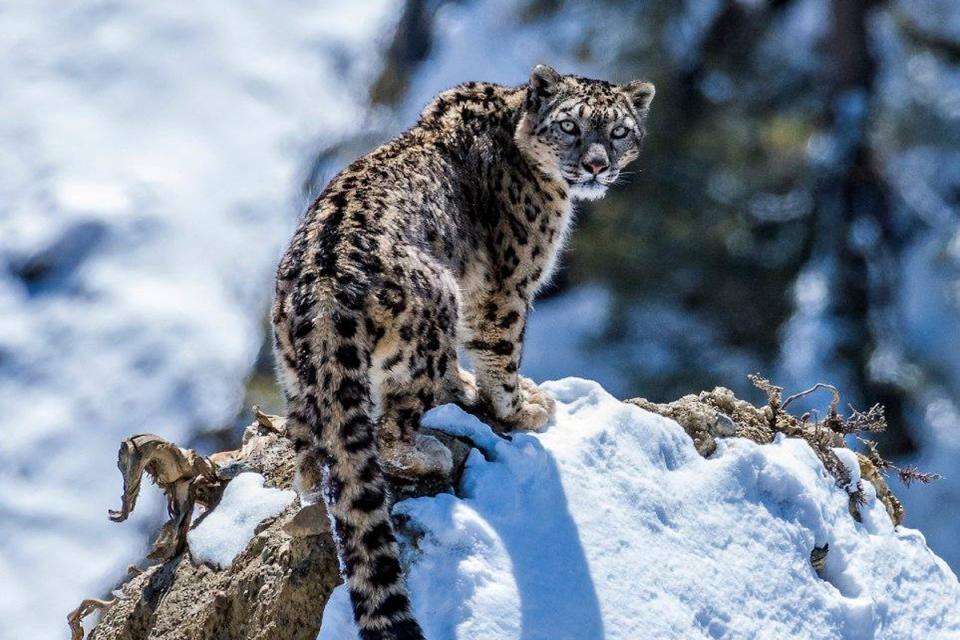Snow Leopard Photography in Nepal 2025/2026: Capturing the Ghost of the Himalayas
The snow leopard (Panthera uncia), often called the "Ghost of the Himalayas," is one of the most enigmatic and elusive big cats in the world. Known for its extraordinary camouflage and secretive behavior, this majestic animal is found at high altitudes in the rugged mountain landscapes of Nepal. For wildlife photographers and nature lovers, capturing a glimpse or better yet, a photograph- of the snow leopard is a once-in-a-lifetime experience.
In 2025/2026, Nepal continues to be a premier destination for snow leopard photography, offering unrivaled access to some of the best habitats for these magnificent creatures. This blog explores the essential information for planning a snow leopard photography expedition in Nepal, including the best locations, optimal timing, equipment recommendations, and conservation context.
Why Nepal for Snow Leopard Photography?
Nepal’s Himalayan ranges provide a diverse and rich habitat for snow leopards, particularly in the rain-shadow regions where the environment is drier and prey abundant. The country boasts several protected areas that are critical habitats for these cats:
-
Manang Region: Nestled within the Annapurna Conservation Area, Manang's rugged cliffs and alpine meadows provide excellent snow leopard habitats. Increasing conservation efforts have made this region more accessible and wildlife-friendly.
-
Upper Dolpo: Known for its remote wilderness and Buddhist culture, Upper Dolpo offers a pristine and less-visited habitat for snow leopards. Its rain-shadow climate creates a unique environment that sustains a healthy population of the Ghost Cat.
-
Shey Phoksundo National Park: Adjacent to Upper Dolpo, this park is Nepal’s largest protected area and offers vast, undisturbed terrain ideal for spotting snow leopards.
-
Kanchenjunga Conservation Area: In eastern Nepal, this less-explored area provides another promising habitat with rugged terrain and diverse prey species.
Best Time for Snow Leopard Photography in Nepal
Peak Season: Late Autumn to Early Spring (October to April)
The ideal period for snow leopard photography in Nepal is from late autumn through early spring. During these months, snow leopards tend to descend to lower altitudes, making them easier to spot in the alpine and subalpine zones between 3,000 and 5,000 meters.
In particular, December to March is considered the prime time, with cold, clear days enhancing visibility and offering crisp photographic conditions. The snow-covered landscapes create stunning natural backdrops, heightening the visual drama of any encounter.
Top Locations for Snow Leopard Photography in Nepal
1. Manang: The Gateway to Annapurna’s Snow Leopards
Manang lies within the Annapurna Conservation Area, Nepal’s largest protected area. Its steep valleys, rocky outcrops, and alpine meadows create perfect habitats for snow leopards. The region is also home to blue sheep and Himalayan tahr- primary prey for snow leopards.
Trekking in Manang offers a combination of cultural richness and wildlife encounters. The village is a hub for trekkers, providing comfortable lodges and local guides experienced in snow leopard tracking.
Photography Highlights:
-
Dawn and dusk shots along the Annapurna circuit
-
Snow leopard prints and markings on rocky terrain
-
Snow-capped Himalayan peaks as dramatic backdrops
2. Upper Dolpo: Wilderness and Wildlife in Isolation
Upper Dolpo’s remoteness makes it one of Nepal’s most pristine regions. Its dry, rugged landscapes in the rain shadow of the Himalayas host a healthy snow leopard population.
Access is limited, requiring permits and multiple days of trekking, but the rewards are significant: raw, undisturbed habitats and the chance for close, naturalistic wildlife photography.
Photography Highlights:
-
Snow leopards in stark, rocky landscapes
-
Interaction with local nomadic culture
-
Diverse alpine flora and fauna during the short summer window
3. Shey Phoksundo National Park: A Sanctuary of Biodiversity
This vast park, famous for Phoksundo Lake and Tibetan culture, also provides crucial habitat for snow leopards. The park's challenging terrain deters mass tourism, preserving an authentic wilderness experience.
Guided treks into the park allow photographers to explore lesser-known areas where snow leopard sightings have been reported.
How to Prepare for Your Snow Leopard Photography Trek in Nepal
Permits and Permissions
Snow leopard habitats in Nepal fall under protected areas, requiring trekking and photography permits. These include:
-
Annapurna Conservation Area Permit (ACAP)
-
Dolpo Restricted Area Permit (RARA)
-
Shey Phoksundo National Park Permit
Obtaining permits in advance through authorized agencies like Best Heritage Tour ensures smooth access.
Hiring Experienced Guides and Spotters
Local guides with knowledge of snow leopard behavior and landscape are invaluable. Many trekking companies offer dedicated wildlife tracking services, increasing your chances of encounters and safe travel.
Essential Gear for Snow Leopard Photography
-
Camera and Lens: Telephoto lenses (300-600mm) are essential due to the animal’s shy nature and distance.
-
Tripod/Monopod: For stability during long waits.
-
Binoculars: To spot distant movement.
-
Weather Protection: Snow and cold-weather gear for both you and your camera.
-
Backup Batteries: Cold drains batteries faster.
-
Trekking Gear: Proper boots, warm clothing, and sun protection.
Physical Conditioning and Altitude
Snow leopard treks often reach elevations above 4,000 meters, requiring acclimatization and good physical health. Pre-trip cardio training, hydration, and gradual ascent schedules are vital.
Ethical Considerations in Snow Leopard Photography
Respecting wildlife and their habitats is paramount. Photographers must:
-
Maintain distance, avoiding any disturbance.
-
Avoid baiting or luring animals.
-
Follow local regulations and park guidelines.
-
Support conservation efforts by choosing responsible operators like Best Heritage Tour.
Responsible photography not only protects the snow leopard but also ensures the sustainability of tourism in these fragile environments.
Conservation and Community Involvement
Nepalese communities and conservation organizations have increasingly engaged in protecting snow leopards and their habitats. Initiatives include:
-
Community-based anti-poaching patrols.
-
Eco-tourism projects providing alternative livelihoods.
-
Scientific monitoring and research programs.
Photographers and tourists can contribute by supporting these programs, raising awareness, and advocating for conservation.
Conclusion
Snow leopard photography in Nepal offers an unparalleled blend of adventure, wildlife, and cultural immersion. As 2025/2026 opens new opportunities with improved access and conservation collaboration, this is an ideal year to plan your journey into the realm of the Ghost Cat.
With careful preparation, respect for nature, and a spirit of patience, you can capture not just images but memories that will last a lifetime.
Ready to embark on your unforgettable snow leopard photography adventure in Nepal?
Trust the experts at Best Heritage Tour to guide you through the majestic Himalayas safely and comfortably. With years of experience in wildlife expeditions, personalized itineraries, and skilled local guides, they ensure you get the best chance to capture the elusive Ghost of the Himalayas.
Contact Best Heritage Tour Today:
Phone: +977-9851149197
Email: info@bestheritagetour.com
Website: www.bestheritagetour.com
Start planning your snow leopard photography trek for 2025/2026 now!
Author: Best Heritage Tour
Date: 2nd June, 2025


